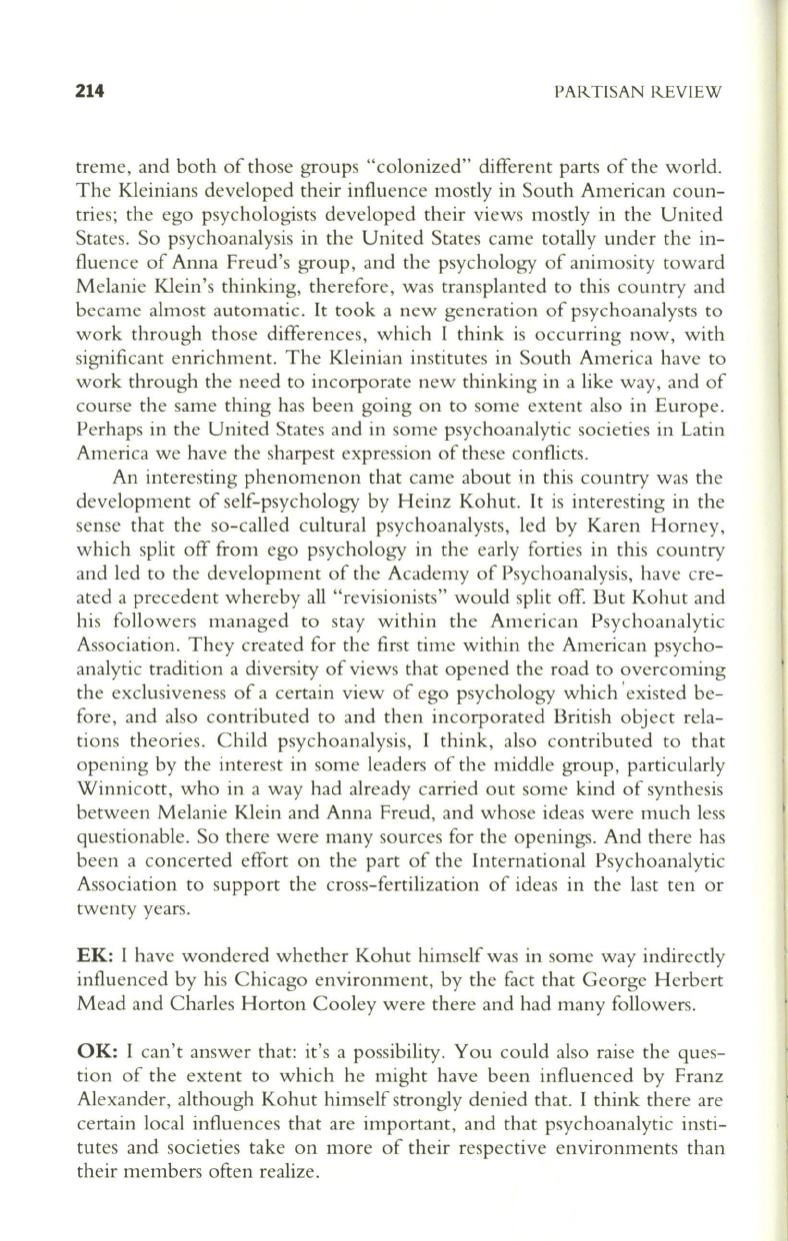
214
PARTISAN REVIEW
treme, and both of those groups "colonized" different parts of the world.
The Kleinians developed their influence mostly in South American coun–
tries; the ego psychologists developed their views mostly in the United
States. So psychoanalysis in the United States came totally under the in–
fluence of Anna Freud's group, and the psychology of animosity toward
Melanie Klein's thinking, therefore, was transplanted to this country and
became almost automatic.
It
took a new generation of psychoanalysts to
work through those differences, which [ think is occurring now, with
significant enrichment. The Kleinian institutes in South America have to
work through the need to incorporate new thinking in a like way, and of
course the same thing has been going on to some extent also in Europe.
Perhaps in the United States and in some psychoanalytic societies in Latin
America we have the sharpest expression of these conflicts.
An interesting phenomenon that came about in this country was the
development of self-psychology by Heinz Kohut. It is interesting in the
sense that the so-called cultural psychoanalysts, led by Karen Horney,
which split off from ego psychology in the early forties in this country
and led to the development of the Academy of Psychoanalysis, have cre–
ated a precedent whereby all "revisionists" would split of( But Kohut and
his followers managed to stay within the American Psychoanalytic
Association. They created for the first time within the American psycho–
analytic tradition a diversity of views that opened the road to overcoming
the exclusiveness of a certain view of ego psychology which 'existed be–
fore, and also contributed to and then incorporated British object rela–
tions theories. Child psychoanalysis, I think, also contributed to that
opening by the interest in some leaders of the middle group, particularly
Winnicott, who in a way had already carried out some kind of synthesis
between Melanie Klein and Anna Freud, and whose ideas were much less
questionable. So there were many sources for the openings. And there has
been a concerted effort on the part of the International Psychoanalytic
Association to support the cross-fertilization of ideas in the last ten or
twenty years.
EK: I
have wondered whether Kohut himself was in some way indirectly
influenced by his Chicago environment, by the fact that George Herbert
Mead and Charles Horton Cooley were there and had many followers.
OK: I
can't answer that: it's a possibility. You could also raise the ques–
tion of the extent to which he might have been influenced by Franz
Alexander, although Kohut himself strongly denied that. I think there are
certain local influences that are important, and that psychoanalytic insti–
tutes and societies take on more of their respective environments than
their members often realize.


